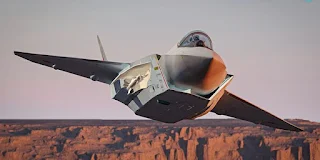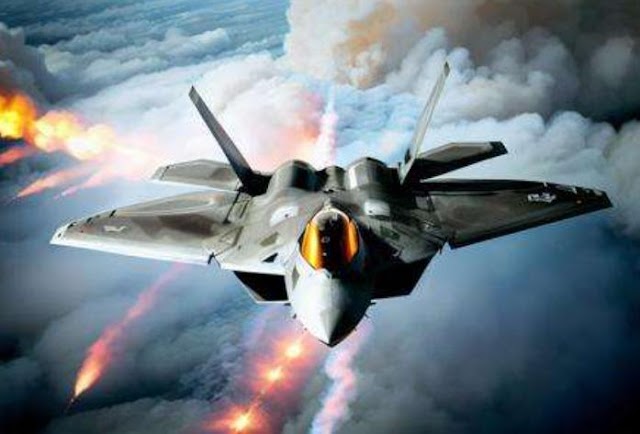Su-75 Checkmate: A Game-Changer in Military Aviation
The 2021 MAKS air show witnessed a groundbreaking moment with the unveiling of the Su-75 Checkmate, a static non-flying prototype that captured global attention. President Vladimir Putin's presence underscored the significance of this event, marking a pivotal milestone in Russia's aerospace industry. The Checkmate's maiden flight, initially scheduled for 2023, was subsequently postponed to 2024, with the commencement of initial deliveries anticipated for 2026–2027.
 |
| Su-75 Jets |
Low-Cost Design and Export Potential:
Designed to be cost-effective and tailored for export markets, the Su-75 Checkmate represents a strategic move by Russia to expand its footprint in the international defence market. With features aimed at enhancing operational efficiency and affordability, the Checkmate is poised to compete with established players in the light to medium-weight category, including the Lockheed Martin F-35 Lightning II and the Shenyang FC-31.
Production Projections and Economic Implications:
Forecasts suggest a production volume of 300 planes over a span of 15 years, signalling long-term commitment and investment in the Su-75 programme. The chief executive of Rostec, Sergei Chemezov, has provided insights into the expected cost per unit, estimating it to range between US $25–30 million. These projections underscore the economic significance of the Checkmate project and its potential to generate substantial revenue for the Russian aerospace industry.
Challenges Amidst International Sanctions:
However, the development of the Su-75 Checkmate is not without its challenges. International sanctions imposed on Russia in response to the Russo-Ukrainian War pose significant obstacles, particularly in terms of sourcing essential components and technologies. Restrictions on imports of semiconductors and high-tech machining equipment from the European Union have disrupted supply chains and delayed production timelines. Additionally, limitations on trading using US dollars have impacted potential export sales, necessitating alternative strategies to navigate these constraints.
Progress and Adaptation: Overcoming Adversity:
Despite the challenges posed by sanctions, efforts to advance the Su-75 programme persist. The United Aircraft Corporation's announcement to build four prototypes of the Su-75 Checkmate signifies a commitment to innovation and technological advancement. Flight tests slated for as early as 2024 demonstrate proactive measures to mitigate delays and ensure timely development.
Analyst Perspectives and Strategic Considerations:
Analysts have raised concerns regarding the impact of sanctions on the Su-75's development trajectory. Maya Carlin of the Center for Security Policy highlighted the potential repercussions of funding loss from key stakeholders, such as the United Arab Emirates, amidst shifting geopolitical dynamics. Strategic decisions by potential buyers, such as the UAE's interest in acquiring F-35s with possible support from Israel, underscore the competitive landscape and geopolitical considerations shaping the aerospace industry.
Technological Innovations and Tactical Advantages:
The Su-75 Checkmate boasts advanced features designed to enhance operational capabilities and tactical effectiveness. Notable innovations include a diverterless supersonic inlet (DSI), a v-tail, and internal weapons bays, aimed at reducing radar signature and enhancing manoeuvrability. The incorporation of cutting-edge technology underscores Russia's commitment to maintaining a competitive edge in military aviation.
Performance Specifications and Operational Capabilities:
According to the jet's designers, the Checkmate is engineered to deliver impressive performance metrics, including a range of up to 3,000 km, a payload capacity of up to 7,400 kg, and speeds reaching Mach 1.8 to 2.0. Equipped with an internal weapons bay capable of housing five missiles and an autocannon, the Checkmate offers versatility and firepower for a range of mission profiles.
Future Prospects and Continued Innovation:
Patents published in 2023 reveal ongoing efforts to refine and optimise the Su-75's design, with modifications aimed at further reducing radar signature and enhancing aerodynamic performance. The continued evolution of the Su-75 Checkmate underscores Russia's commitment to innovation and technological leadership in military aviation.
Conclusion:
In conclusion, the unveiling of the Su-75 Checkmate represents a significant milestone in Russia's aerospace industry, with implications for global defence markets. Despite challenges posed by international sanctions, efforts to advance the Su-75 programme persist, driven by a strategic imperative to maintain technological superiority and operational readiness. With cutting-edge features, impressive performance metrics, and ongoing innovation, the Su-75 Checkmate heralds a new era in military aviation.










.jpeg)
.jpg)
2 Comments
plane
ReplyDeletegreat.plane
ReplyDeleteIf you have any doubts. Please let me know. I would be happy for your kind suggestion.